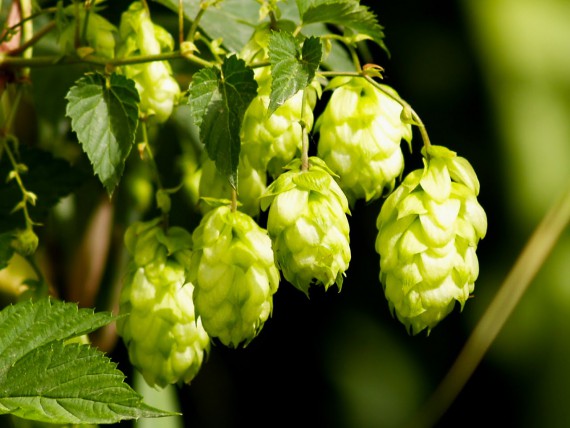 You don’t have to be a home brewer to know about hops; any dedicated beer drinker needs to know what’s going on in their glass. Hop plants are part of the hemp family and the flower on top of the plant is what is used in brewing. Hops have a bitter flavor and that bitterness is meant to counter the malt’s sweetness – this creates balance in your beer.
You don’t have to be a home brewer to know about hops; any dedicated beer drinker needs to know what’s going on in their glass. Hop plants are part of the hemp family and the flower on top of the plant is what is used in brewing. Hops have a bitter flavor and that bitterness is meant to counter the malt’s sweetness – this creates balance in your beer.
Hops, however, are not all created equal and different types can bring different flavors to a beer. Just like wine, there are different hop-producing regions in the world and each one has a signature flavor.
There are a ton of different hops out there, and these are just a few:
- Amarillo – citrusy/flowery taste, found in ale and IPA
- Brewer’s Gold – fruity/spicy, found in ale and heavier German-style lagers
- Bullion – really rich and intense black current aroma, found in IPA, ESB and stout
- Cascade – fruity/citrusy/sometimes grapefruit flavors, found in pale ale, IPA, porter, barleywine
- Liberty – mild and clean with a little spice, found in lager, pilsner, bock, wheat
- Tettnanger – mild/herbal, found in German ales and lagers, American lagers, wheat
Hops can pretty much be divided into two different categories: bittering and aroma. Noble hops are king of the aroma hops and there are four types: Hallertau, Tettnang, Spalt, and Czech Saaz. They typically have a smooth bitterness and spicy/floral aromas. The most popular types of American Hops that you’ll usually find in your beer are Cascade, Centennial, Chinook, Willamette, and Amarillo.
It’s true – the best way to learn about hops is to start brewing on your own. It’s one thing to be told how something smells and tastes, but it’s another to experience it first-hand. Even if you don’t have an interest in brewing, hang out with a friend or family member while they do it – you’ll learn a lot and hopefully get some free samples at the same time.
Home-brewers or beer lovers feel free to comment and tell us your experience with different kinds of hops.

